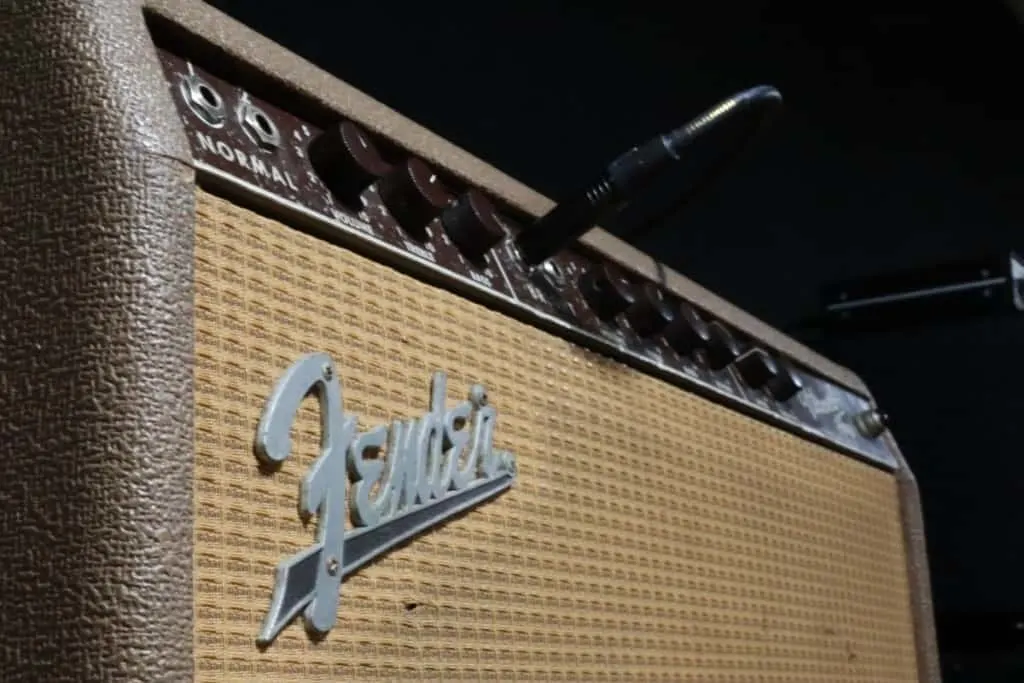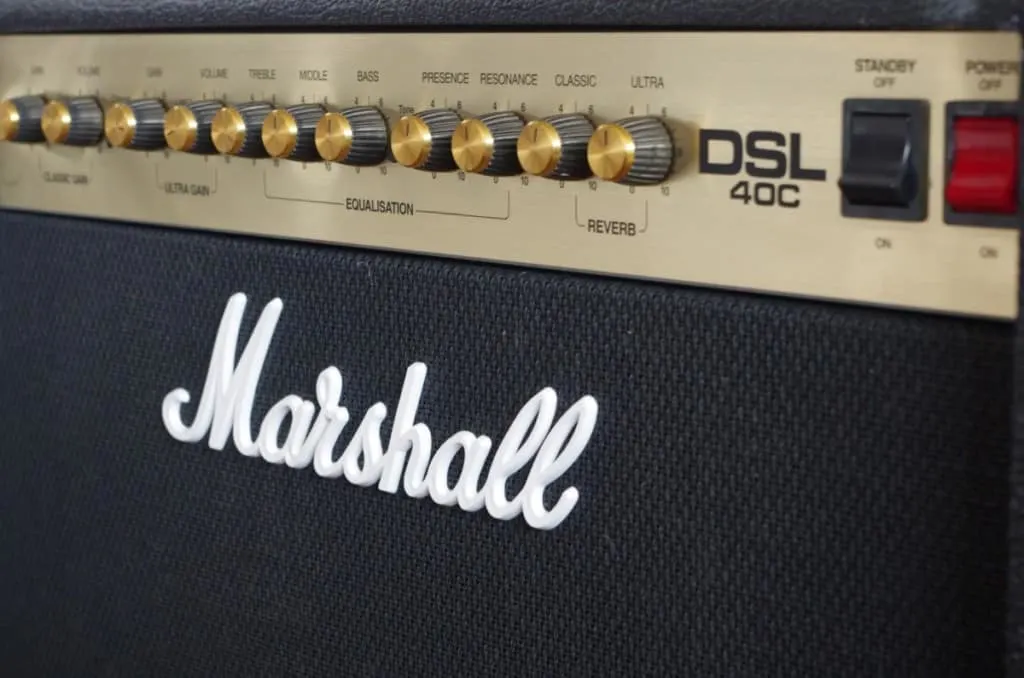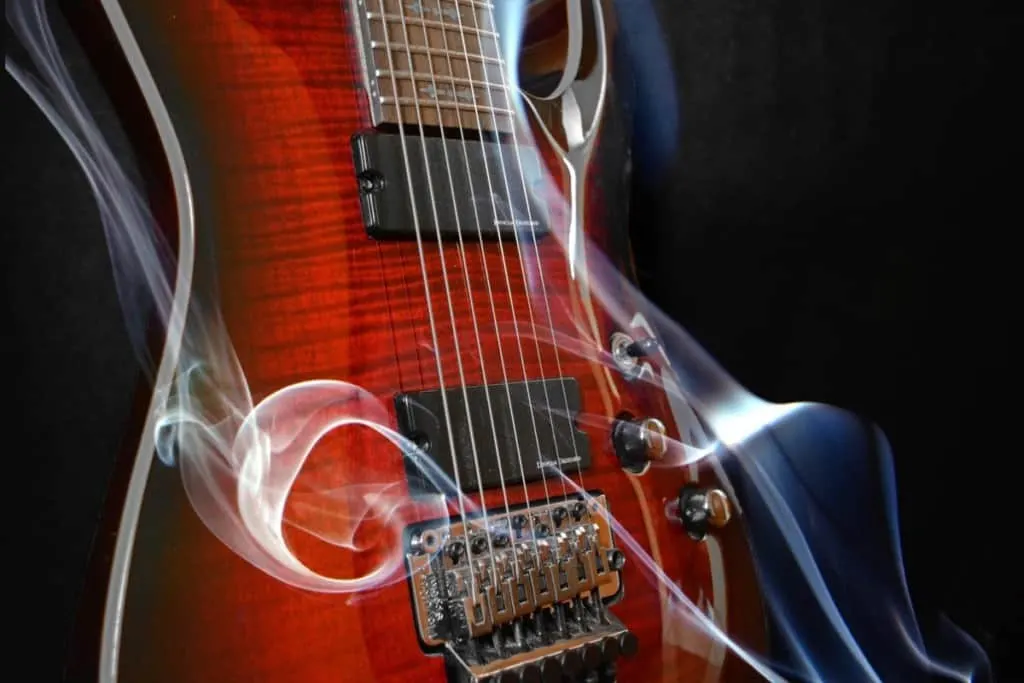There is a common thought that companies would do whatever is at hand to take our money from our pockets. Thinking that way can lead us to assume that they want to invent a new market niche so that we buy things we don’t need.
Is that the case with bass and guitar amps? Can you plug your guitar or bass indistinctively and it will sound the same? I’ve been a musician for the past 30+ years and can tell you the exact answer to that question right here, right now.
So, what’s the difference between guitar and bass amps?
Bass amps have a straight-forward preamplification stage, high power wattage, and a speaker configuration specifically tuned to excel at the low, and low-mid range of frequencies. Guitar amps, on the other hand, focus on the mid and mid-high frequencies with a more complex preamp stage, lower wattage, and different speakers.
This is just the tip of the iceberg because there is a lot we can talk about in terms of what makes these amps so diverse. Are you ready to clear this doubt once and for all? Let’s do this.
A Little History: It All Started With A Bass Amp
Let me take you back in time to the middle of the last century.
A man named Leo Fender had just put out with his company some good-selling, cheap musical instruments that were to revolutionize the world forever.
During the previous three decades, many brands attempted to create amplifiers for such instruments without much success.
Leo Fender was not a musician, but an engineer and he knew just what to do to bring his instruments to life. He created a legend: the Fender Bassman. It was one of the very few truly reliable and loud amplifiers in the world thanks to the revolutionary rectifier valve he installed in the circuit.
As you might know, Leo Fender was to music what Henry Ford was to cars. His intention was to create reliable, affordable solutions for the musicians of that time.
That model evolved and eventually, it became the benchmark that was about to define the sound of an era.
At this point, there was no differentiation in what instrument you could plug into it, and it was used seamlessly by harmonica, bass, guitar, and lap steel players during their performance. They were even used as PA systems for vocals because there was nothing else.

The Rock And Roll Revolution Changed It All
Leo Fender’s amplifiers made it across the ocean to the other side of the world and came to the hands of a drummer.
His name was Jim Marshall. He had a small shop in London where he sold cymbals and other drumming supplies. He had regular clients like Pete Townshend (The Who) and Ritchie Blackmore (Deep Purple).
At the time, amplifiers coming from the USA were too expensive and although they sounded great, they didn’t have the sound they were looking for.
With this in mind, Jim Marshall hired some EMI apprentices and a Pan American Airways engineer and created what he thought was the cheaper version of the Bassman. He called it the JM45. Instead of using 4 10” speakers, he used 4 12” speakers of an English brand called Celestion. Also, he decided to chop off the head of the amp and make them separated for transport and weight.
This is how the rock and roll revolution began and a US engineer, a British drummer, and an airline employee forever changed the future of music.
Up to this point, everyone was using the same amps, but from the sixties on, the story was to be very different and guitar players could finally get that sweet overdriven distortion they looked for. Without Marshall, there would be no such sound but without Fender, there would be no Marshall.
What Happens if You Plug Your Instrument Into The Wrong Amplifier?
What happens if you plug your guitar to a bass amp and vice versa? Are there any immediate consequences for it? We immediately imagine Marty McFly’s scene blowing up that humongous amp at Dr. Emmet Brown’s place. Well, not quite.
Plugging A Guitar Into A Bass Amp (What Happens)
This is the best-case scenario.
Bass amps are manufactured to take high volume; they are usually sturdier, have bigger transformers, bigger speakers, and fewer bells and whistles.
You might find that your guitar sounds dull or that there are some frequencies missing in the mid-high register but it is very unlikely that you blow it up.
It’s more about not having as many tone-shifting abilities than about breaking it. Actually, I learned how to play plugging into a bass amp and during the Nu-Metal revolution when we did all that down-tuning on our guitars and played with massive distortion, bass amps helped a lot.

Plugging A Bass Into A Guitar Amp
This case scenario is completely different. For starters, if you have a small amp and an active bass it can be an instant disaster.
The circuit board and the speaker of guitar amps are not manufactured or chosen to handle low frequencies that well. You might blow the speaker and the amp itself.
That being said, if you plug a passive bass to a big guitar amplifier, you can get some amazing sounds. Bands like Motörhead created a style playing a Rickenbacker with a pick through a distorted Marshall. In the long run, even the vibration of the low frequencies might damage soldering. To say it in different words: I do not recommend plugging a bass into a guitar amplifier.
Here’s an interesting video on playing a Bass through a guitar amplifier
Do Guitar And Bass Amps Have Different Sounds?
Let’s Talk Amplifier Tubes
Ok, now that you know which path brought us here was, it is time to talk about tubes. One of the main differences between bass and guitar amps is that they sound different; they are voiced in a different way. A lot of it has to do with the tubes employed. Let me tell you a couple of things about it:
Preamp Tubes
The preamplification stage is where all the magic happens; especially nowadays when playing a valve amplifier at a high volume in a live venue is almost utopic for most players.
· 12AX7/ECC83 – These are the most common preamp tubes you’ll find in any piece of valve-driven gear. The 12ax7 is the US name and Ecc83 is the European name but they are mostly the same. The particular thing about these preamp valves is that they overdrive very easily thus, they are perfect for guitar amps, and tube preamps.
· 12AT7/ECC81 – These preamp tubes are slightly different than the above in the sense that they generate less overdrive allowing for a cleaner sound at a higher volume. Many bass amps favor these ones in the preamp circuit for clarity and punch.
Power Amp Tubes
Power amp tubes are the second component in a valve amp and are the ones that actually generate volume.
They also change the sound a lot. They are very different and depending on the amount and kind of tubes you put together, the resulting wattage and sound of the amplifier will be. Let’s take a look at the manufacturer’s most common choices.
· 6V6GT/7408 – These are the smaller power amp tubes that you can find in amplifiers powered between 15 and 35 watts. They are behind the famous VOX amps sound (The Beatles, U2), some of the smaller Fenders like the Princetone and the Deluxe Reverb, and such. They generate approximately 7.5 watts of power each and overdrive rather easily because you can surely crank a 20-watt amplifier mostly anywhere getting that crunchy sound we all love. They are very rarely used in bass amps since they usually have a higher wattage and you would need to stack too many of these to generate it.
· 6L6/5881 & EL34 – 6L6s are what is known as “The Fender sound” They were the valves powering most Fender amps and remain the same to this day. Fender Bassmans are still powered by 6L6s. When Marshall first started they used WWII US Army leftover 5881s to create their JTM45. They generate approximately 25 watts each. “The Marshall sound” or “brown sound” comes from utilizing EL34s which are different types of power tubes with the same wattage but a very different sound.
· KT88/6550 – This is entering almost exclusively bass-amp territory. There are very few guitar players who play through these tubes and almost every big bass amplifier company employs them. For example, the SVT line from legendary Ampeg amplification utilizes 6550s to demolish walls with notes. They are slightly bigger in wattage than 6L6s and 5881s.
Valves are the top of the crop of amplified instrument sound.
Although they remain the benchmark for high-end equipment were replaced by transistors a long time ago in more affordable models due to price and weight. In capacitor’s land, the distinction is in the voicing of the preamp section and the features, not the components.

Guitar Amp Vs Bass Amp Speakers (What’s The Difference)
Speakers are also a big part of the sound of the amplifier.
There are some frequencies that are conveyed into the air better through a speaker size than with another. You might have noticed that 10” and 15” are very common in bass amplifiers. This is because these speaker sizes are better for translating lower frequencies into the air.
On the other hand, most guitar amplifiers employ 12” speakers (this was Jim Marshall’s big discovery) because they are more capable when it comes to mid and mid-high frequencies.
As with everything, there are many exceptions to this rule. Nevertheless, bear in mind that whenever you want more low end going for 10” and 15” speakers can help you get there and vice versa with 12” speakers.
This can be a game-changer to find your own unique sound and also an impediment. Plugging your guitar to a 15” speaker and trying to get defined mids and highs from it can prove to be mission impossible. Down the same line, getting real low end from a 12” speaker is kind of hard.
Why Are Bass Amplifiers Louder Than Guitar Amplifiers?
Have you got any idea why bass amplifiers are usually capable of generating more volume than guitar amplifiers? Well, the answer is very simple: the frequencies have more competition.
Guitars sit very comfortably in a frequency that is close to the human voice. This means that our ears are specifically tuned to hear that frequency above many others; it used to be a matter of survival. On the other hand, a bass amplifier has to push the lower end forward competing (or complementing in the best case scenario) with the drum kick.
I remember being a teenager and having this huge argument with my punk band’s bass player over the wattage of our amplifiers and shouting at him that he was trying to get all the attention for buying a 500-watt head. Boy was I wrong! It was just as audible in the mix as my 100-watt Marshall JCM900. We now laugh about it (he still reminds me of the fuss I made).
There is no rule about it because the instrument also makes a big difference, but usually, a bass amp should be twice the size of a guitar amp in watts to be able to be up to the task in volume. Also, remember that to “move” a 15” speaker you need more power than a 12” speaker, and hence, the power amp section has to be more capable.

Guitar Amplifier Vs Bass Amplifier Features
This is another category in which guitar and bass amps differ drastically. Let’s do a little history so you can understand where this comes from.
Back in the mid-seventies and early eighties, guitar players needed to get that “Marshall sound” distorted tones at lower volumes.
To make a Bassman or JTM45 distort, you needed to push the valves and hence play really loud. This became a problem in some venues and also, guitar players needed more gain. Marshall came up with the idea of adding a master volume which means that you could push the valves separately.
The JCM800 is the clearest example of this since early models had a knob labelled “preamp” and another as “master”. The first knob pushed the 12ax7s creating natural overdrive without adding volume while the master handled the mighty EL34s. This way you could set the master low and the preamp high and get your amp to distort without killing anyone in the first row.
You heard this amp many times before, perhaps its most famous user is Slash, but also in the hands of Eric Clapton, Billy Corgan (Smashing Pumpkins), Tom Morello (Rage Against the Machine/AudioSlave), Mike Mushok (Staind), Scott Ian (Anthrax), Joey Santiago (The Pixies), Johnny Ramone, and Zakk Wylde (Ozzy Osborne/Black Label Society) among many, many others. The JCM800 debuted in 1981 and is still being manufactured in England and used around the world to this day.
With the decade change and grunge coming along, guitar players needed clean for the verses and distortion for the choruses/leads. Think in bands like Nirvana, Alice in Chains, Jane’s Addiction, and such.
Jim Marshall decided to create a new amplifier with the capability of switching channels between distorted and clean. This way the company left pure tube overdrive to favor transistor-driven distortion.
Together with a footswitch to change between the channels, the JCM900 was born (JCM800 for the 80s, JCM900 for the 90s). This became a standard feature in most modern guitar amplifiers and also the idea behind the creation and commercialization of many of the guitar pedals we see in the world today.
Now that you know where it comes from, let’s take a look at the features you could expect from guitar and bass amps:
Guitar Amplifier Common Features
· Reverb – This was, perhaps, the earliest addition to a guitar amplifier. Reverb is an effect that emulates the natural sound of the echo playing in a large room. It is very commonly associated with Fender amps and it is the trademark of surf guitar. You probably heard it on the title track for Quentin Tarantino’s Pulp Fiction movie.
· Distortion – As we saw extensively above, distortion differs from natural overdrive in how it is originated but also in how it sounds. Dual-channel amps are super common.
· DSP – The acronym stands for Digital Signal Processing and means the addition of digital processing on analog circuits. This was thought to be a revolution in the early 2000s but now it’s mostly something purists hate and can mostly be found in practice and small amps.
Bass Amplifier Common Features
· Impedance switch – Most modern amplifiers have an impedance switch and this responds to the fact that active basses are way more common than active guitars. Plugging a passive or an active bass makes a big difference and this switch allows you to accommodate one or the other seamlessly. They are usually labeled active/passive.
· XLR direct out – Plugging a guitar in a direct line to go to the mixer is something that people rarely do but it is something way more common for bass players. Having an XLR output in your amplifier allows you to abstain from using a microphone in front of the speaker and send a preamplified signal straight to the mixer. It is super handy if you play live and also in the studio.
· Limiter – Some bass amps have an onboard limiter to help you avoid overloading the circuit and also preventing an excess of low end to reach the speaker. They usually come with colored LEDs (green and red) letting you know when it kicks in.
Bass amps, as you might have seen are way more straight-forward than guitar amps.
Final Words
Guitar amps and bass amps are very similar in many aspects. Many people wonder what the difference is, and it resides in the concept and the voicing. Different materials provide different sounds and exchanging valves, speakers and features can take you to one territory or another.
That being said, most of the biggest leaps in art always come from bending and breaking the so-called rules. Now that you know the possible damage, origins, meanings, and concepts, you have more freedom to experiment taking your sound to a different place.
Be bold and wise and the sky is the limit.
Happy (amplified) playing!
